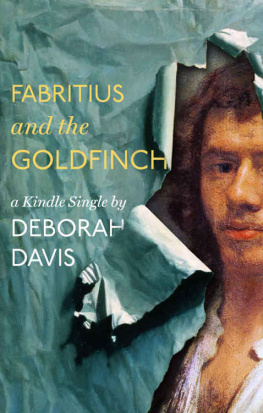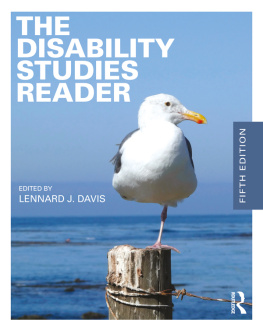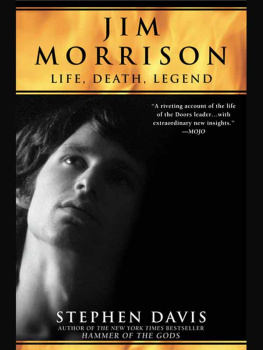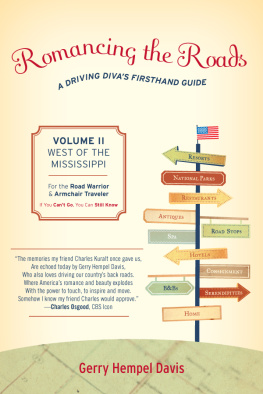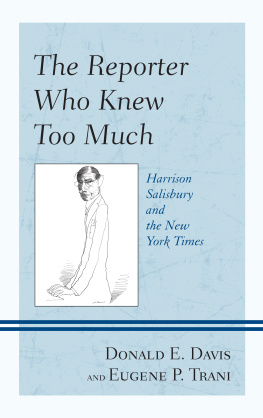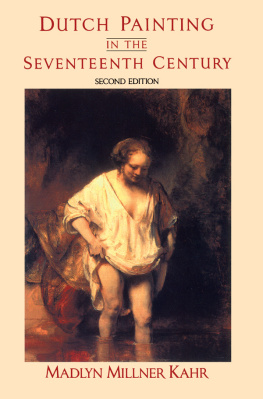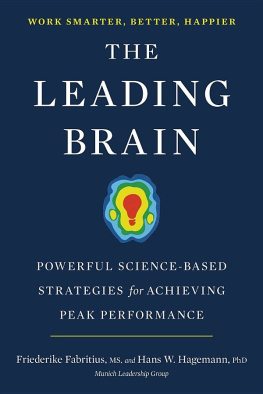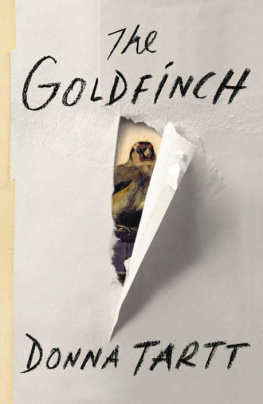Davis - Fabritius and the Goldfinch
Here you can read online Davis - Fabritius and the Goldfinch full text of the book (entire story) in english for free. Download pdf and epub, get meaning, cover and reviews about this ebook. year: 2014, genre: Detective and thriller. Description of the work, (preface) as well as reviews are available. Best literature library LitArk.com created for fans of good reading and offers a wide selection of genres:
Romance novel
Science fiction
Adventure
Detective
Science
History
Home and family
Prose
Art
Politics
Computer
Non-fiction
Religion
Business
Children
Humor
Choose a favorite category and find really read worthwhile books. Enjoy immersion in the world of imagination, feel the emotions of the characters or learn something new for yourself, make an fascinating discovery.
- Book:Fabritius and the Goldfinch
- Author:
- Genre:
- Year:2014
- Rating:3 / 5
- Favourites:Add to favourites
- Your mark:
- 60
- 1
- 2
- 3
- 4
- 5
Fabritius and the Goldfinch: summary, description and annotation
We offer to read an annotation, description, summary or preface (depends on what the author of the book "Fabritius and the Goldfinch" wrote himself). If you haven't found the necessary information about the book — write in the comments, we will try to find it.
Fabritius and the Goldfinch — read online for free the complete book (whole text) full work
Below is the text of the book, divided by pages. System saving the place of the last page read, allows you to conveniently read the book "Fabritius and the Goldfinch" online for free, without having to search again every time where you left off. Put a bookmark, and you can go to the page where you finished reading at any time.
Font size:
Interval:
Bookmark:
FABRITIUS AND THE GOLDFINCH
A True Story of Art, Tragedy, and Immortality
DEBORAH DAVIS
Copyright 2014 by Deborah Davis
The Goldfinch,Donna Tartts monumental novel of love, loss, and redemption, is the publishingstory of the year. Like so many enthralled readers, I raced through the book and,when it ended, I was eager for more information about Tartts captivating littlebird on a perch and the mysterious artist who put him there. Was The Goldfinchdescribed in the book a real painting, I wondered, and did it have a history allits own? I quickly learned that it was, in fact, an actual work of art and thatits story independent of Tartts novel was an epic, behind-the-canvas tale ofa brilliant, doomed painter named Carel Fabritius and his greatest work.
Fabritius, one of seventeenth-centuryHollands boldest and most talented young artists, suffered great personal tragedyand never-ending financial woes during his short life, yet he managed to turn adversityinto inspiration, painting exciting, maverick works that could only be describedas modern, especially his impressionistic and emotionally charged portrait ofa chained goldfinch. And that goldfinch, from the first time Fabritius put brushto canvas in 1654, had a long and storied flight through history, from an artistsstudio in the legendary Dutch Republic at the height of its Golden Age, to a collectorsdeathbed in fin-de-sicle France; from a museum in present-day New York City, tothe cover of a bestselling book. Time and again, the diminutive painting, aboutthe size of a piece of typing paper, teetered on the brink of destruction. Yet,somehow, despite disaster, disappearance, and the often cruel vicissitudes of fate,The Goldfinch endured.
The true story of Fabritius and his Goldfinchstands on its own, inviting readers into a rich and beguiling world with compellingsettings and themes. The Dutch Republic in the first half of the seventeenth centurywas as rich, as risk-taking, and as decadent as New York in the flamboyant eighties.The artists of the Golden Age were at the center of the culture, with fame and fortunewithin tantalizing reach, but only for a select few. And what about the actual goldfinch?The bird was extremely popular in Holland at the time, but was it a plaything ofthe rich, robbed of its freedom? Or, as some studies suggest, was it a creaturethat preferred captivity to life in the real world, where it, like Fabritius, wouldbe buffeted by destiny and, ultimately, destroyed?
Both the artist and his beloved painting would take their first steptoward immortality on a seemingly ordinary day in Delft, in 1654.
October 12, 1654
It is a fact of life that artists never have enough money to pay thebutcher, the baker or in the case of Carel Fabritius, the local innkeeper. The thirty-two-year-oldpainter, or schilder as it was called in his native Holland, lived brushto canvas, hand to mouth, and had fallen into the unfortunate habit of running upbills. He owed The Target, a tavern in Delft, 110 guilders for his food and drinktab, which he had sworn to pay by October 15 November 1 at the very latest, hepromised. Here it was October 12 and the debt clock was ticking. But Fabritius wasoptimistic about his prospects. That previous summer, the Delft Town Council hadpaid him 12 guilders for a painting and a few small renderings of the citys coatof arms. Though the fee was low, Fabritius expectations were high: He was happyto have the approval of the town fathers, who could offer future commissions and,more importantly, good references.
In seventeenth-century Delft, and throughout the Dutch Republic forthat matter, art was a booming business. Paintings were the most accessible formof home dcor, so all kinds of people rich merchants, middle-class shopkeepers,even peasants with a few spare florins routinely bought portraits, landscapes,still lifes, genre paintings, and histories. Among artists, competition for thesecustomers was fierce. In the last four years alone, fifty-four new members had joinedthe all-powerful St. Lucas Guild the Delft labor organization governing artists including a promising young genre painter named Johannes Vermeer. Artists hadto belong to the guild (a union as powerful as todays teamsters), or they wereforbidden to teach or sell their work in Delft. Fabritius joined as a master painterof histories in 1652, typically paying only half his dues while promising to paythe remaining 6 guilders at some unspecified point in the future.
Joining the guild was a very wise move, because the following two yearsturned out to be the most productive period of his young life, and possibly themost artistic. Fabritius was exploding with fresh ideas, and approached each canvasas if it were a bold experiment, playing with perspective, color, light, texture,and subject. He was daring, even modern. Where other artists painted dark backgrounds,he covered his canvas with white. He created images that had depth and dimension,and explored the brand new technique of trompe loeil, literally tricking theeye into believing it was seeing the real thing instead of an illusion, as he didwith his latest work, The Goldfinch.
In the painting, a small bird sits on a perch, chained, casting a shadowon the pale wall behind it. The brush strokes are loose and impressionistic, theeffect so real that the tiny creature appears poised to take flight. Instead ofusing canvas, Fabritius painted on a piece of wood. The picture was a bright additionto his studio and a constant puzzle. Though he worked on other projects, Fabritiuskept coming back to The Goldfinch to make adjustments. He tried one frame,then another. He filled in the background after he put the final toucheson his bird. He added another element to the goldfinchs bird house, and then hefussed with the background a second time.
The Goldfinch was an endlessly fascinating work-in-progress,but Fabritius had to concentrate on the painting at hand the one that might payhis bill at the tavern and generate more assignments. He had been commissioned todo a portrait of Simon Decker, the venerable sexton from the Oude Kerk, theOld Church, in Delft. He knew exactly what do with his sitter, having painted amasterful portrait of the fifty-six-year-old Amsterdam silk merchant, Abraham dePotter, in 1649. Not that Fabritius ever did the same thing twice. He liked to challengehimself, to break rules instead of following them.
Even his choice of where to live was a form of rebellion. Ambitiousartists aspired to make names for themselves in the big, bustling metropolis ofAmsterdam. Yet, in 1650, Fabritius made the decision to move to the smaller, jewel-likecity of Delft. The French poet Paul Claudel marveled, No other place exists wherethere is so close an intercourse between the ambient light and its painters vision,describing Delft as a poetic dreamland. Like the other artists who lived there,Fabritius was charmed by the citys immaculate house fronts, peaceful canals, andabundant Linden trees, and he found it to be a place of beauty, repose, and inspiration.But, at heart, he was a rebel and an outlier, so he picked a neighborhood that wasa little daring. The Doelenstraat was off the beaten track, some distance away fromthe more fashionable town center the equivalent of an artist living in New YorksSoHo in the 1970s, or in Brooklyn today but the somewhat remote area had its advantages.Fabritius street bordered the overgrown grounds of a former convent, so his studiowas quiet.
Actually, all of Delft was quiet on this autumn Monday. Many of thetownspeople had gone off to a fair in The Hague, or to the swine market in nearbySchiedam. It was a workday for Fabritius and his apprentice, Matthias Spoors. Theirsitter, Simon Decker, arrived at the studio in the morning and settled into hiscustomary pose, while Spoors mixed the days paints and Fabritius eyed his canvas,plotting his next strokes.
Next pageFont size:
Interval:
Bookmark:
Similar books «Fabritius and the Goldfinch»
Look at similar books to Fabritius and the Goldfinch. We have selected literature similar in name and meaning in the hope of providing readers with more options to find new, interesting, not yet read works.
Discussion, reviews of the book Fabritius and the Goldfinch and just readers' own opinions. Leave your comments, write what you think about the work, its meaning or the main characters. Specify what exactly you liked and what you didn't like, and why you think so.

